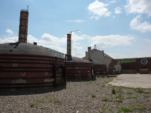Overall, Alberta’s economic situation looking brighter
By Medicine Hat News Opinon on June 14, 2018.
If you want to find something wrong with the Alberta economy, you don’t have to look very far. Gas prices are high. Power rates are rising. Too many are still unemployed. Business groups are worried about government regulations and the cost of rising wages. Yet it’s hard not to trip on positive economic news in southeastern Alberta. New major industrial projects total more than $250 million in investment inside Medicine Hat alone, and the region’s total is more than $1 billion. As many people in our area are working as before the drop in oil prices and resulting economic downturn three years ago. Across the province, the unemployment rate is now lower than Saskatchewan’s — that province previously advertised as having done all the right things to reverse an economic downturn. There are major matters of concern, of course, such as the Trans Mountain pipeline expansion and the state of the global trade system. But, even day-to-day grumblings are generally positive in the full view of the economy. Gasoline prices pinched consumers by jumping above $1.30 per litre last month, though greater oil patch activity from higher than expected crude prices is most welcome. Similarly though more complex, power prices point to some degree of higher industrial activity in the province that slowed significantly in 2015. Those prices — which are also affected by the current coal-power phaseout program — now float just under the 10-year average. They are filling municipal coffers in Medicine Hat, where this week forecasters predicted a $33-million profit at the local publicly owned utility. It’s also a time when industry observers began to question how much longer private power producers could sustain rock-bottom prices. On balance, much is positive, but negativity rooted in tough economic times is slow to wane, and is morphing. Match the analysis of economists and business groups to the man or woman on the street and you’ll find that utility costs, wages, unemployment and interest rates are at the same time both too high and too low. For example, central bankers, economists and major investment houses worry what higher wages, brought on by lower unemployment and minimum wage legislation, may do to inflation rates, and therefore interest rates. After a decade of low interest rates, however, those in the “savers” category — comprising most of Canada’s aging population — will likely welcome higher returns. That just as wage earners would welcome bigger paycheques, or the unemployed would appreciate a job. Yet, low-interest rates bolsters business investment and the housing sector. So, as a society, we’re left arguing that no matter what, the rates are wrong. That’s been extended to wages. Folks may worry that new jobs aren’t replacing the “good-paying” jobs of the past, but also about the effect on cost of living that can accompany generally higher wages. Such is the business sector’s main complaint with the Alberta government’s move to a $15 minimum wage. It’s a particularly acute discussion in Medicine Hat, which has the highest percentage of low-wage workers in Alberta. That’s after years of unofficially advertising to business investors that higher wages weren’t required as the local cost of living was so low. Let’s not be naive; there are major negatives to spiralling inflation, labour shortages or an overheated economy. We’re not there yet, however, and on balance, Alberta’s fortunes appear to be brighter. (Collin Gallant is a News reporter. To comment on this and other editorials, go to https://www.medicinehatnews.com/opinions.) 28-27



